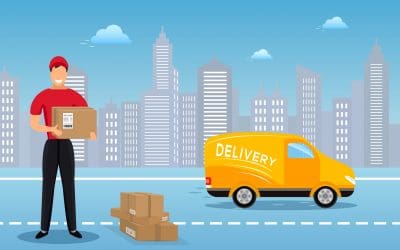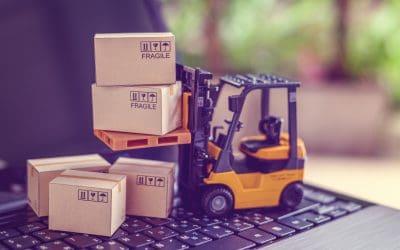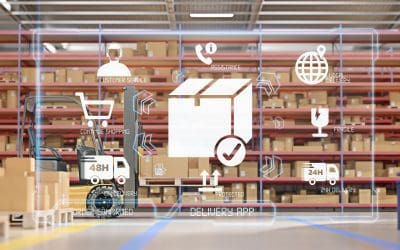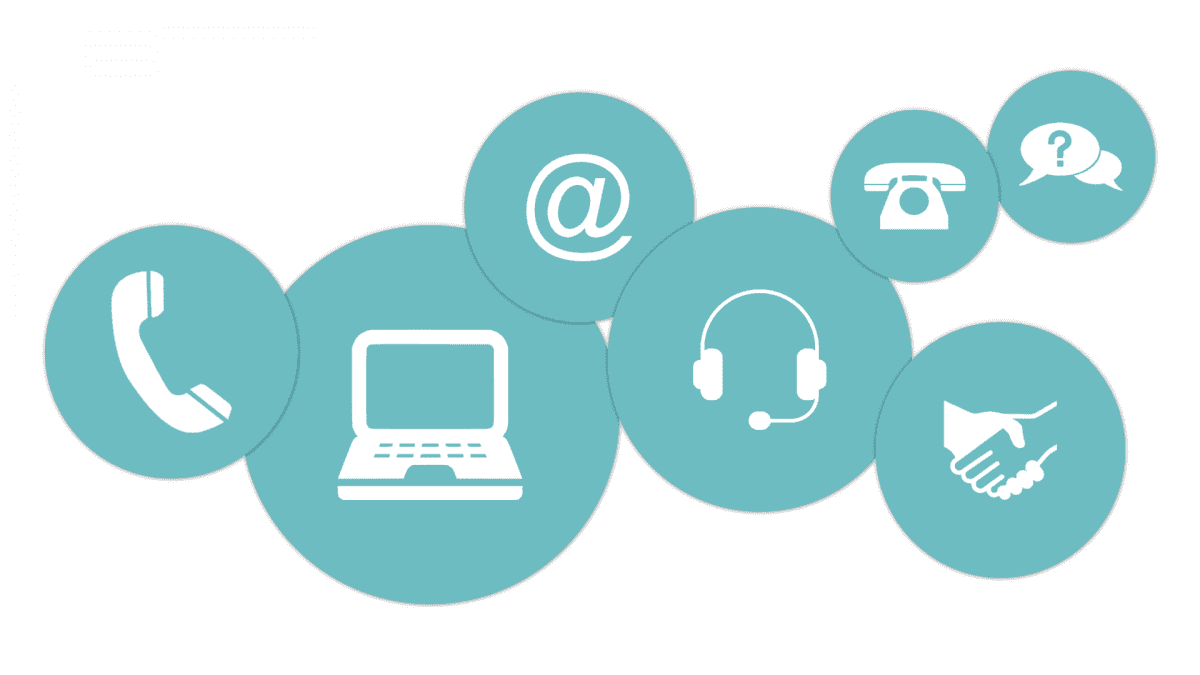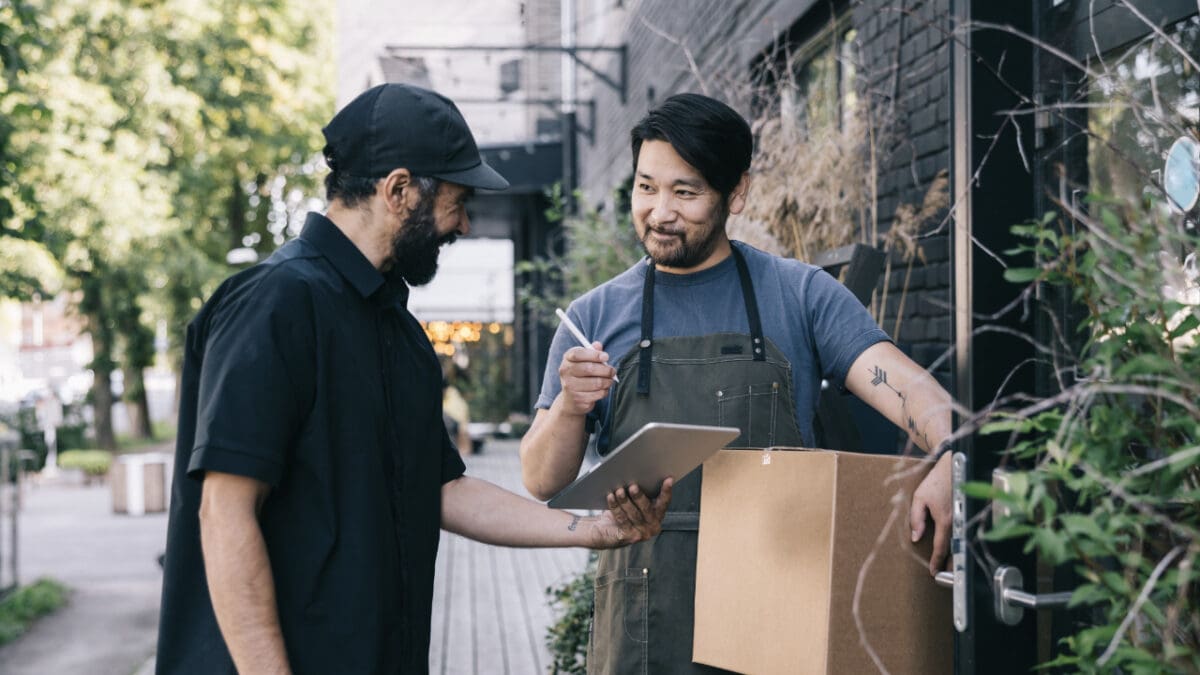
Last-mile delivery is a topic of heated discussion and rampant confusion. Why is the shortest portion of the shipping process so much more difficult and expensive when it’s the closest to the customer? Well, much like last-mile delivery itself, the answer is complicated.
While it is a huge obstacle for businesses, it isn’t an insurmountable one. However, in order to find workable strategies and helpful solutions, you must first understand the problem. Let’s go over what last-mile delivery is, how it works, and how you can make it work in your business’s favor.
What Is Last-Mile Delivery?
Last-mile delivery is the term used to describe the final leg of the delivery process. It’s the stage of your shipping logistics that actually gets the order into the customer’s hands. It’s called “last-mile delivery” because it includes the final mile the package will travel before being handed to the recipient.
Last-mile delivery isn’t just the final shipping step, it’s also the most difficult, complex, expensive, and important part of the process. While the earlier steps can use planes, ships, and extremely large trucks on interstate highways to move large batches of packages, the last-mile must be done in a smaller vehicle, in residential areas, and one at a time.
Keep reading to learn more on last-mile delivery or jump ahead to the section you’re interested in:
- Why Last-Mile Delivery Matters
- How Does Last-Mile Delivery Work?
- The Last-Mile Problem
- Strategies & Tools To Do Last-Mile Delivery Right
- Last-Mile Trends & FAQs
Why Last-Mile Delivery Matters
Last-mile delivery is also a customer touchpoint for your business that can make or break their opinion of your whole brand. Fast, trackable, convenient deliveries have a huge impact on customer satisfaction. If you do it right, you get satisfied, loyal customers, who return again and again. Do it wrong and 85% of customers will never return.
Good last-mile delivery doesn’t just matter to your customers, it also matters to your bottom line. Accounting for a whopping 41% of supply chain costs and 53% of total shipping costs on average, the last-mile is often the most expensive part of a company’s logistics. This is due to the complexity of the process and the obstacles it presents.

How Does Last-Mile Delivery Work?
Before we can understand the challenges and success strategies of last-mile delivery, we need to understand how it works. Let’s start with an overview of the last-mile delivery process from start to finish.
Steps in the Last-Mile Delivery Process:
- Order Placement: The business receives the customer’s order.
- Order Fulfillment: The supplier(s) and/or manufacturer(s) provide the product(s) in the order.
- Warehousing/Distribution Center: All products in the order are sent to the company’s warehouse or distribution center to be processed and prepared for shipping.
- Route Planning: The most cost-effective and logical route is determined using factors like the delivery address, preference settings, and vehicle capacity.
- Delivery Assignment: The delivery is then dispatched to the best carrier for the job.
- Package Scanning & Tracking: Packages are scanned at every step of the delivery process, allowing customers to track their orders.
- Delivery: The package arrives at the delivery address.
- Proof of Delivery: Proof of delivery is obtained (i.e., signature, photo, etc.).
Each of these steps can be facilitated and improved using technology. There are many software solutions designed to streamline the delivery process.
Technology Used to Facilitate Last-Mile Delivery:
- CRM, ERP and/or POS Systems
- Route Optimization Software
- Real-Time GPS Tracking
- Delivery Driver Applications
- Customer Communication Tools
- Innovative Delivery Vehicles (EVs, Autonomous Cars, Drones, Etc.)
Technological advancements put the most cutting-edge, innovative solutions in your hands.
The Last-Mile Problem
The last mile delivery problem stems from rising customer expectations. Shoppers want fast and free shipping. However, for businesses, the last-mile is the most expensive, complex, and time-consuming part of the supply chain. As people order more products online, stressing the supply chain further, they expect it to move faster and smoother than ever.
That obviously doesn’t add up, and businesses are the ones stuck doing the math. The last-mile costs the most money, but businesses can’t charge for delivery. As demand increases, especially during peak periods like holidays, they have to find a way to scale quickly without losing efficiency or time.
Customers are impatient. Once a package is out for delivery, they don’t understand why it takes so long to reach them. The truth is, there are many complex reasons aside from the fact that there could be any number of deliveries before theirs.
Residential roads have limits on truck sizes and weight capacity requiring smaller vehicles. There are also lower speed limits. Drivers face high traffic in urban areas and huge distances between neighbors in rural ones. Plus, unexpected delays like weather, roadwork, and traffic issues are completely out of their control, yet they’ll be held accountable for them.
Failed deliveries and free returns also cost businesses. Yet customers expect them to bear the cost. They also expect them to invest in environmentally-friendly practices on top of that. All these expectations must be met without passing the cost on to customers. That is the last-mile delivery problem.
Strategies to Do Last-Mile Delivery Right
The last-mile delivery problem is a big issue, but that doesn’t mean you can’t find solutions. There are steps you can take to make your last-mile delivery process as smooth as possible and cut down on costs.
Optimize Routing and Delivery Schedules
The more efficient your last-mile delivery process is, the faster and cheaper it will be. Route optimization sounds simple enough. You just take the fastest route to the customer, right? Well, when you only have to get something from point A to point B, sure. When you have dozens, hundreds, or even thousands of deliveries though, it’s not so easy.
Plus, one route may be the shortest distance, but a route that requires driving more miles but with a higher speed limit may actually be the fastest. That’s all before you account for traffic accidents, weather, road closures, and detours. It gets pretty complicated.
That’s where last-mile delivery software with route optimization features comes into play. It can provide your drivers with the most efficient route and even dynamically re-route drivers when there’s a problem like traffic issues or road closures. It can use real-time data to detect and mitigate delays.
Leverage Technology and Real-Time Data
Real-time data can be used for more than just delivery re-routing. GPS tracking can provide real-time visibility for customers and dispatchers. Plus, mobile apps can be used for driver communication and customer updates, so everyone knows what’s happening as it happens.
Improve Customer Communication
Real-time tracking can provide customers with delivery updates and advance customer communication. They always want to know where their package is, and if there are delays, they want the updated delivery time right away. Real-time tracking and delivery updates can meet all those expectations.
However, customer communication goes both ways. You need to talk to them, but you also need to listen. Hear them when they tell you they want more delivery options and provide them.
Customers want BOPIS (buy online, pick up in store). They want flexible delivery windows, including evenings and weekends, so they can choose a convenient time. This will also reduce your missed delivery costs.
Partner with local businesses to allow customers to pick up packages nearby. Use local delivery companies and crowdsourced delivery to expand your carrier options and deliver packages sooner. These tactics will help you lower your costs and delivery times as well as improve customer experience. You may even be able to offer same-day delivery in some locations.
Reduce Delivery Costs
Delivery costs in the last-mile are the highest of any stage. Businesses need to mitigate these costs somehow to maintain profitability. One way to do this is to implement smart packaging solutions. Smart packaging helps reduce costs in many ways.
Smart Packaging Can:
- Track and trace packages
- Prevent tampering
- Ensure correct conditions for perishables
- Provide additional information using QR codes
- Be reused to increase sustainability
Route clustering is another way to save on delivery costs. By clustering deliveries, you can deliver more packages faster. Your deliveries will be consolidated into one area, making it faster and easier to deliver packages.
Partner with Reliable Carriers and Logistics Providers
If you want to succeed, you need to choose the right partners. For successful last-mile delivery, you need carriers and logistics partners that you can count on. Your partners and your business are tied together. When they succeed, you succeed, and vice versa. A collaborative relationship with businesses that have a good track record for on-time deliveries is the best path to success.

Top Tools and Technologies for Last-Mile Delivery Optimization
Luckily, there are plenty of tools and technology to help you conquer your last-mile delivery. Many of them include AI and automation features. Automation can help you spend less time and resources on your logistics. The more things you automate, the more time you have for the things that actually require human intelligence.
AI can collect, track, and analyze data at speeds humans could never hope to reach. Then, they can even identify patterns, predict future demand and conditions, and provide insights you could never have gotten otherwise.
Specific Tools and the Features They Offer
Let’s go over some of the best tools and technology solutions available and the features they provide to aid your last-mile delivery.
- Automated Routing and Dispatching
- Optimized Route Planning
- Real-Time Driver Tracking
- Driver Mobile Apps
- Customer Notifications
- Photo and Signature Capture
- Logistics Reporting
Third-Party Delivery Platform:
- Third-Party Delivery
- Delivery Automation
- Price and Time Comparisons
- Preferred Providers
- Crowdsourced Delivery
- A Network of Millions of Drivers
- Business Rules and Preferences
- Delivery Provider Analytics
- Automated Return Validation
- Customer Return Requests
- Return Policy Enforcement
- Advanced Rules Engine
- Self-Serve Returns
- Customer-Facing Portal
- Secure Chain of Custody
- Automated Pickup Requests
Elite EXTRA has a suite of tools that can suit your last-mile delivery needs with all the features you could want.
Dive deeper into the world of last-mile logistics by downloading our latest white papers for free!
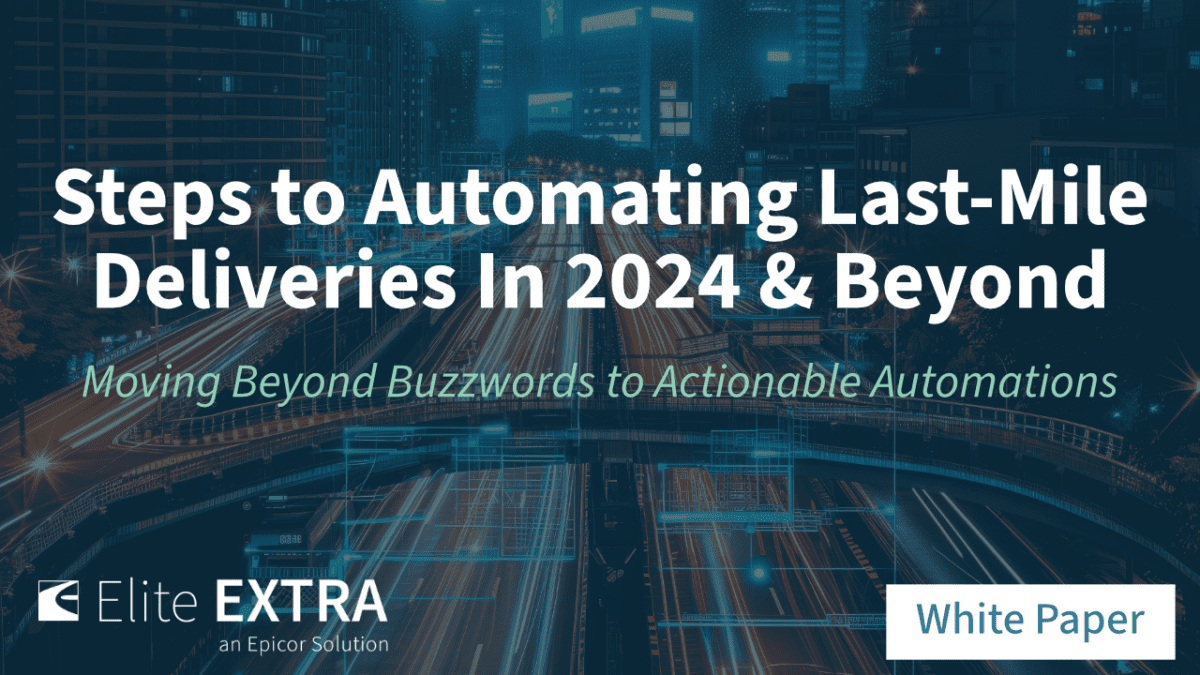
Steps to Automating Last-Mile Deliveries in 2024 & Beyond
In this white paper from Elite EXTRA, discover the top 5 opportunities you can take advantage of today to automate your last mile deliveries.
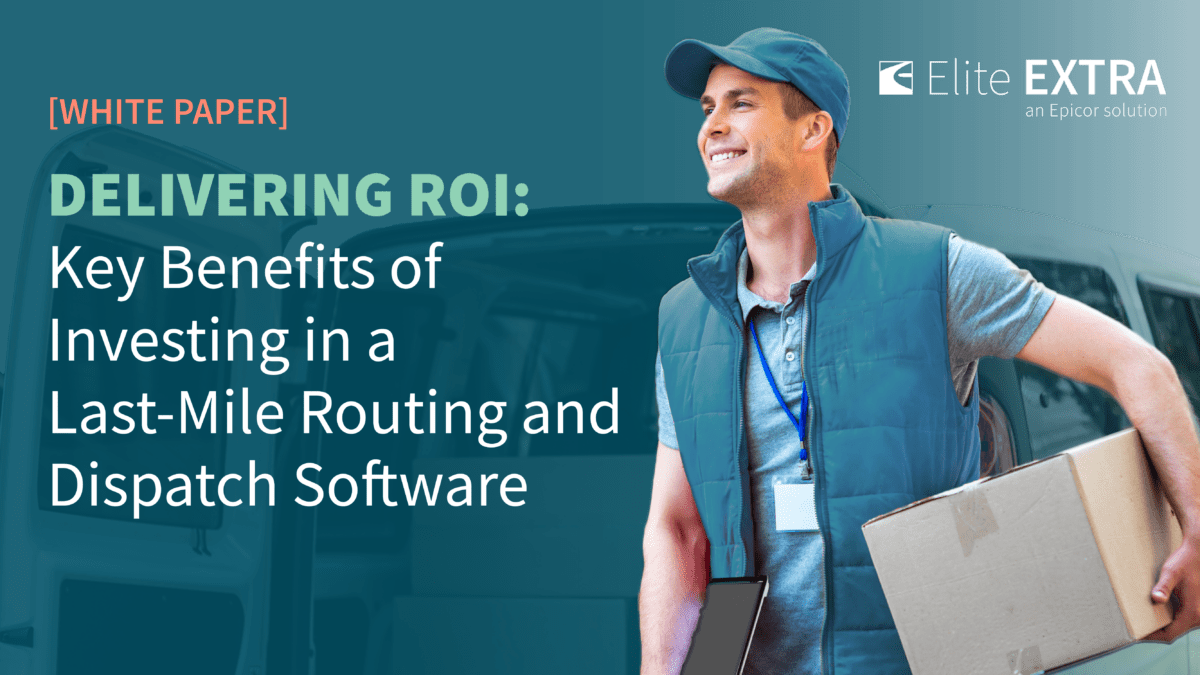
Key Benefits of Last-Mile Routing & Dispatch Software
In this white paper, we dive deep into the ROI benefits of implementing last-mile routing and dispatch software for your delivery business.
Last-Mile Delivery Trends
Right now, most last-mile delivery trends are focused on technology and innovation. Companies are using more software solutions to automate and streamline their processes. They’re integrating the newest options in delivery technology from EV vehicles and autonomous vehicles to drone delivery.
AI is exploding right now. Thanks to some key breakthroughs, advancements abound. AI is getting better at automation and predictive analysis to provide hands-off processes and data-driven insights to make decisions more accurate. These tools allow companies to be more proactive rather than reactive.
There’s also a focus on scalability and collaboration. Businesses are partnering with stores, carriers, platforms, and individuals to provide more, faster, and better delivery options. Smart Lockers are increasing in use as a way to provide safe and convenient pickup locations.
Many companies are even using platforms typically used for food delivery to get their packages to their customers. Working with others and using existing tools in new ways is definitely a trend likely to continue.
Frequently Asked Questions
Here are some answers to our most frequently asked last-mile delivery questions.
What is last-mile delivery?
Last-mile delivery is the last-step in the supply chain when the product is actually brought to the delivery location and into the customer’s hands.
How does last-mile delivery work?
After products are ordered and sent to the distribution center or warehouse, the delivery route is planned, and the order is assigned to a driver for delivery. Then the customer receives and signs for it.
How long does the last-mile delivery process take?
Last-mile delivery has no set timetable. It depends on the pickup location, delivery location, customer preferences, and a host of on-the-road factors.
What percentage of total supply chain costs come from last-mile deliveries?
Last-mile delivery, on average, accounts for around 41% of total supply chain costs and 53% of shipping costs.
What is the last-mile delivery problem?
The last-mile delivery problem is the struggle between increasing customer expectations for free and fast shipping and the cost of delivery for businesses and road conditions causing delays out of the business’s control. Businesses must meet these expectations or risk customers going to a bigger competitor who can afford to do it faster and cheaper.
What industries are affected by last-mile delivery?
Last-mile delivery affects every business that offers product delivery across all industries. The businesses affected the most are SMBs that offer nationwide or international shipping. They have fewer resources and more area to cover than corporate giants or small local businesses that offer only local delivery.
Key Takeaways
Last-mile delivery is a challenging problem to address. However, with the right partners, tools, and technology, you can make your last-mile delivery process work for your business.
Learn why Elite EXTRA has been a trusted leader in last-mile delivery software for over 15 years and see how we can help you optimize and scale your last-mile delivery process. Let’s chat!
Sources
https://www.shopify.com/retail/last-mile-delivery
https://thegood.com/insights/bopis
https://fastercapital.com/keyword/flexible-delivery-options.html
https://www.emarketer.com/insights/last-mile-delivery-shipping-explained




